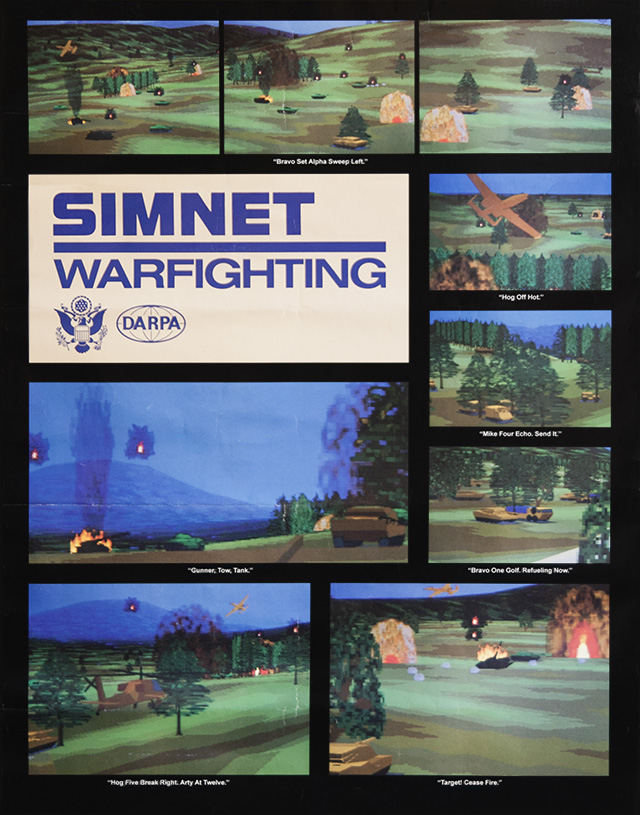
In the early 1980s, an Atari arcade game called Battlezone caught the attention of Defense Advanced Research Projects Agency (DARPA) planners who saw it as the basis for a simulation and training tool. The concept became SIMNET, a large-scale networked tactical training environment where human crews train in realistic vehicle simulators interact and collaborate across a network.

SIMNET was a wide area network with vehicle simulators and displays for real-time distributed combat simulation: tanks, helicopters and airplanes in a virtual battlefield. SIMNET was developed for and used by the United States military. SIMNET development began in the mid-1980s, was fielded starting in 1987, and was used for training until successor programs came online well into the 1990s.
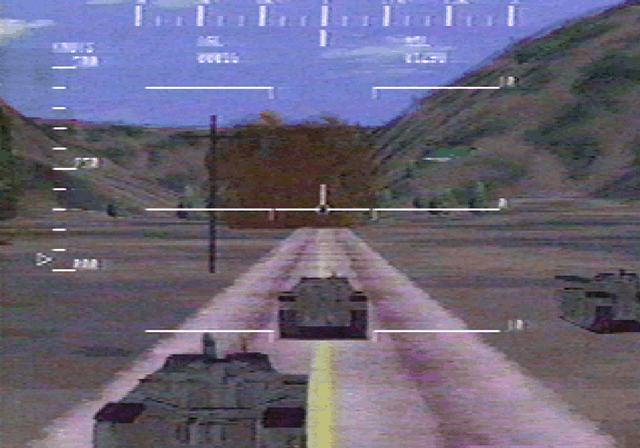
SIMNET was perhaps the world's first fully operational virtual reality system [Sterling] and was the first real time, networked simulator. It was not unlike our massive multiplayer games today. It supported a variety of air and ground vehicles, some human-directed and others autonomous.
My first projects were building environments, or what we called terrain databases. We used height data from a French satellite to render the ground and populated the terrain with simple low poly models. I would create palettized textures for the models and burn that data to a computer prom. These proms would have to be manually installed in each simulator to be able to use that set of textures. I worked on the Bergen-Hohne Training Center terrain database. We had to map out the tank training course as precisely as possible and place visual clues. The simulation was used for training in the 1988 tank shoot-off between England, Germany and the U.S. The tankers were only allowed to practice a limited number of runs on the actual course in Germany, but the American teams practiced long hours in the simulators. We won the competition that year. Germany put in an order for simulators from BBN shortly after that.
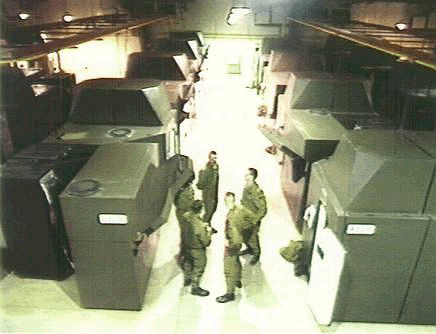
SIMNET simulators at Fort Knox, KY.
I traveled to Fort Knox multiple times to install databases in their simulators. We would upload data off tape drives and install proms into each simulator. I attended design meetings and photographed vehicles; I learned to load a round into an M1 tank, test the thermal sites and move the turret. I had a driver start up an M1 and make smoke while I photographed. These photos were later used to improve our vehicles and effects in the simulator.
Next, I updated the National Training Center terrain database as well as creating Fort Hunter-Liggett terrain database. We were also making modifications to existing terrain databases to aid in battle exercises.
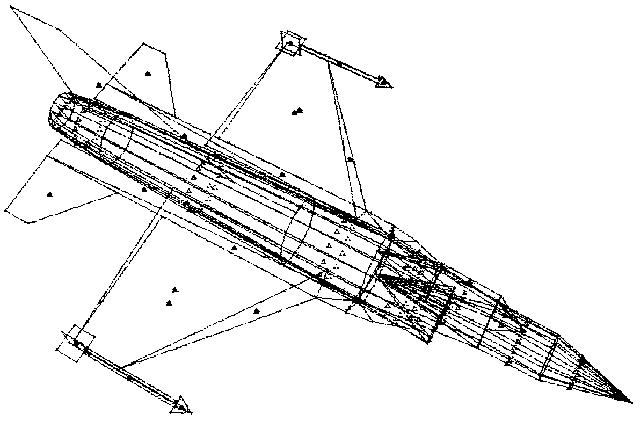
I created the F-16 model that was used in our simulators when we networked with the Air Force's simulators. I coordinated asset and technical spec transfer with Evans & Sutherland to enable the F-16 simulator to join SIMNET battle simulations.
I flew down to San Diego to be the art lead for a major Naval exercise. I met with the Admiral in charge and attended design meetings. The newly commissioned USS Wasp was doing training runs. She was connected to the SIMNET network and participated in simulated exercises in preparation for her actual training mission.
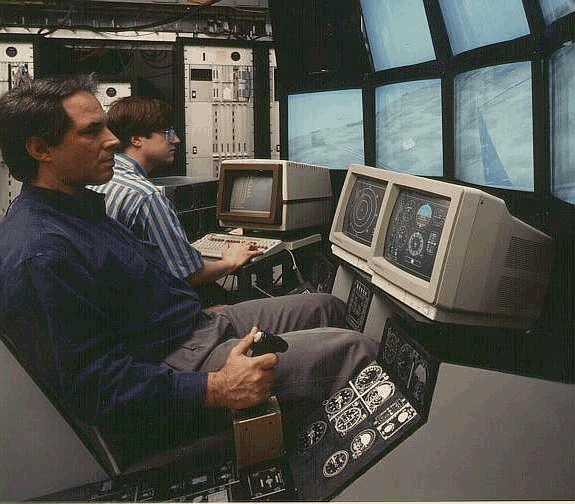
I flew around our databases to test the terrain for accuracy against maps and photographs. Key landmarks were built and percisely placed. I tested new 3D tools that were created in-house for the art team.
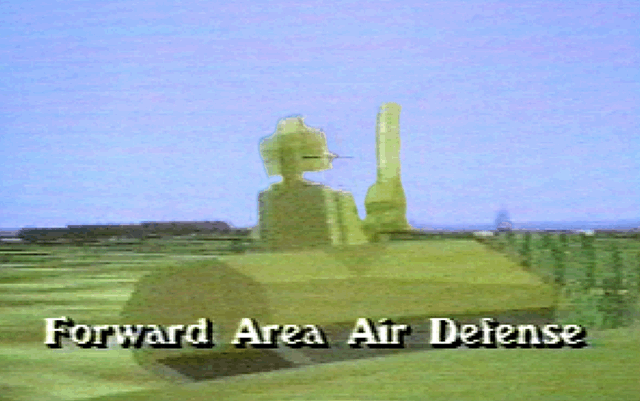
I created models and textures to test experimental weapons systems before those systems were ever built. One of these was a new forward area air defense system. I created the vehicle model with the design specs for the actual experimental vehicle. I installed the database and models at Fort Knox and assisted during the vehicle tests.